I certainly don’t have to look up that title to see if I’ve used it before…
Some time back, I featured a few photos of a jagged ambush bug (Genus Phymata) on one of the butterfly bushes (Buddleja davidii) out front, and I check from time to time to see if it’s still visible. I’ve now been finding one dependably on another of the bushes, and there’s no way to tell if it’s the same one or not – the separation of the bushes is not significant, but it’s still a serious trek for something this small that probably has to go all the way down to the ground and back up. Honestly, I’ve never seen them doing more than minor adjustments in position so I don’t know how ambulatory they can be.
Back on August 25th, my subject was displaying its capture.
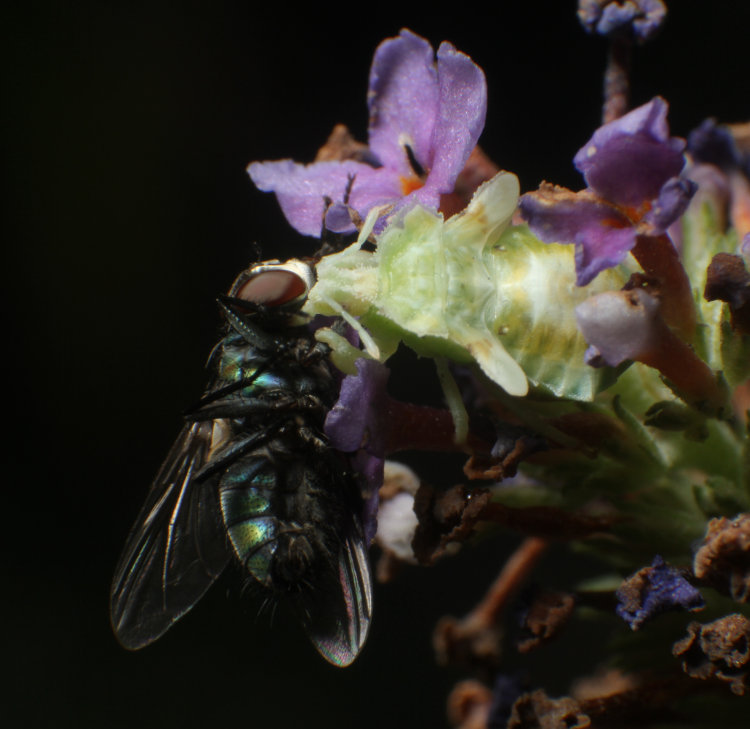
The prey is likely a common green bottle fly (Lucilia sericata,) while you can see that the blooms on that particular flower spike are aging out – still, they were enough for both the ambush bug to feel it could feed effectively, and to attract the fly. What you can also see are the rudimentary wings of the ambush bug sticking out diagonally, indicating that this specimen is not yet an adult.
Unfortunately, in maneuvering for a better shooting position, I bumped another branch of the bush with the flash, barely setting up any motion, but it was enough to alarm the ambush bug into dropping its meal.
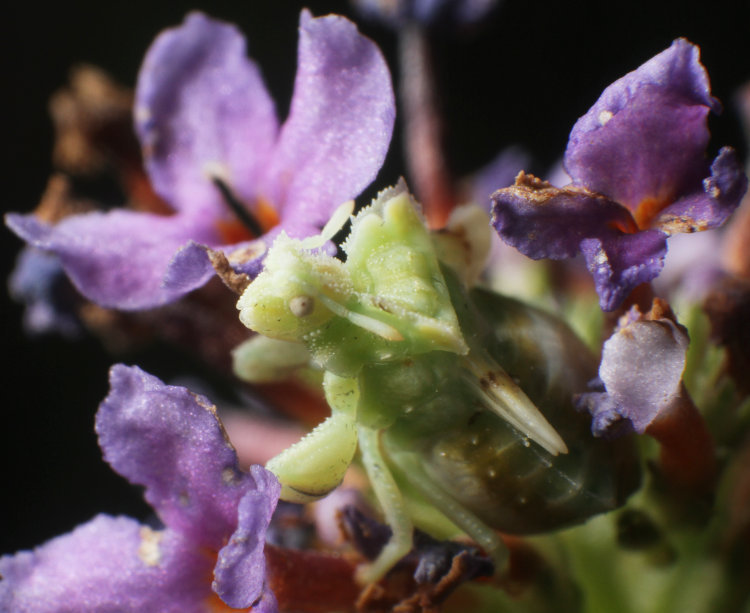
Noticeably bigger now than on previous photographic attempts, but still only about the size of a housefly – they don’t get much bigger regardless. I have to wonder what function those huge shoulders fulfill, but really, the entire anatomy of the jagged ambush bug is pretty flamboyant, the insect equivalent of a Jeepney.

Another illustration of the age of the flower spike – these are the last couple of viable blossoms on the tip, not providing any camouflage, but as we’ve seen it definitely works for the ambush bug.
Then an September 2nd, after some horrendous rains, we find that this one’s still holding fast on the exact same spike, despite the blossoms now being completely dead.
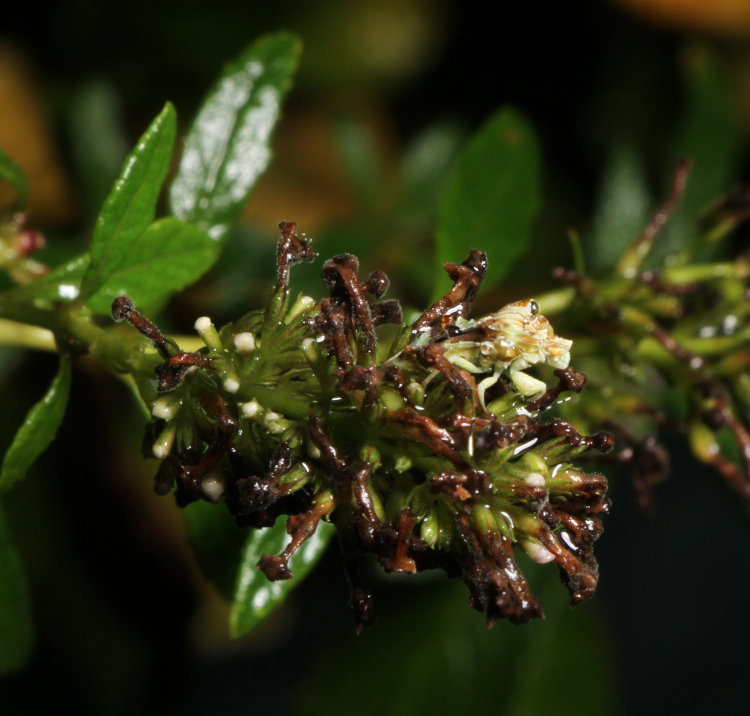
However, there was one distinct difference, and that was in the overall appearance of the specimen, faintly visible here but I quickly changed angles and magnification for a better illustration.
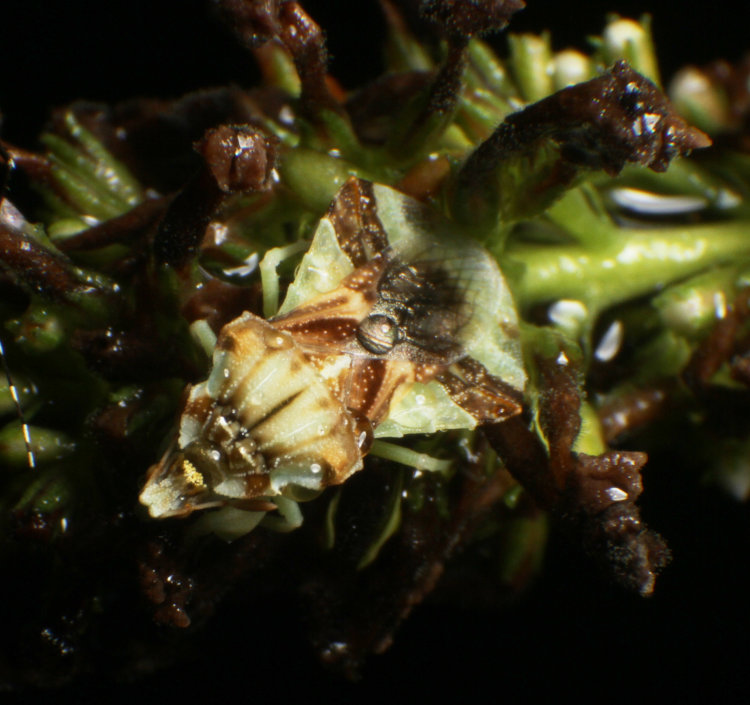
You’re looking down on it from the top here, head towards the lower left. If it hadn’t been in exactly the same location, I would easily have suspected this was a different individual, but in the intervening time it molted into final instar, the adult phase with wings, and gained better camouflage against the dead flowers, though this strikes me as both a bit late and unnecessary, given its prowess in capturing meals with no camouflage at all. The perfectly centered raindrop is a nice touch though…
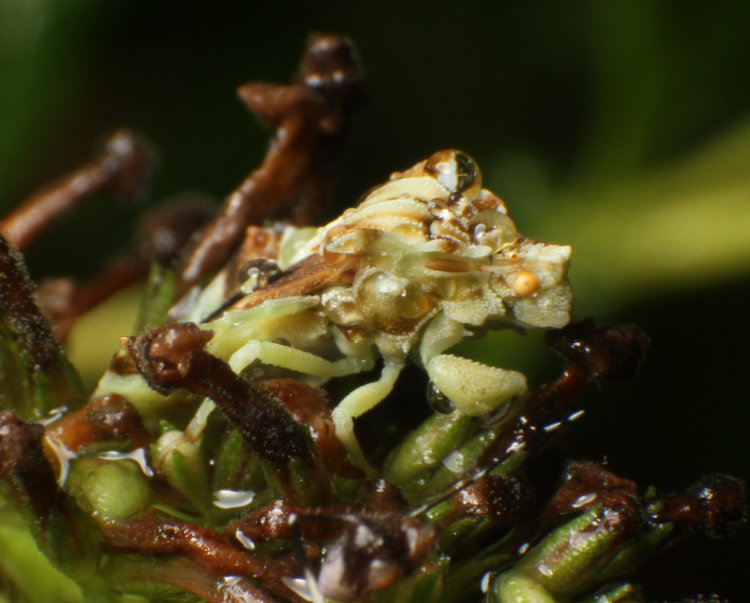
It was still lightly raining as I took these, with a vigorous downpour not long past, but this guy chose not to even move to the underside of the flowers for better shelter. I find it curious that the eyes are no longer the same color as the rest of it, and haven’t the faintest idea why this might be.
Five hours later, it had dried out a bit, and somehow my subject snagged another bottle fly.
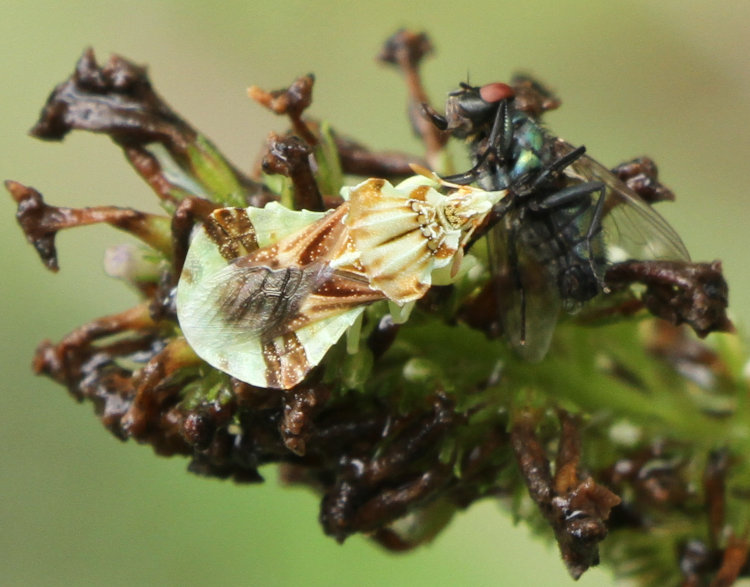
Again, these are quite small, and the fly initially escaped my attention as it blended in with the dead flowers. But we have this small enigma not only of the ambush bug continuing to stake out dead flowers, but successfully too. It started me thinking, and I stopped typing this post to do a bit of research that failed to confirm my suspicions. I wondered if the elaborate shape of the ambush bug, along with its coloration (and potentially any scent it might emit?) served to actually attract the fly, since it seems clear that the flowers shouldn’t be anymore. There is no mention of this at all anywhere that I looked, but it might explain the distinctive body shape and the failure to tuck in amongst the blossoms and blend in, much less go where the blossoms were healthy – you have to admit, the dorsal view is more than suggestive of a flower, though none that I’m familiar with. So if you see me in the yard apparently trying to sniff dead flowers, you’ll at least know that I’m engaged in important research.



















































